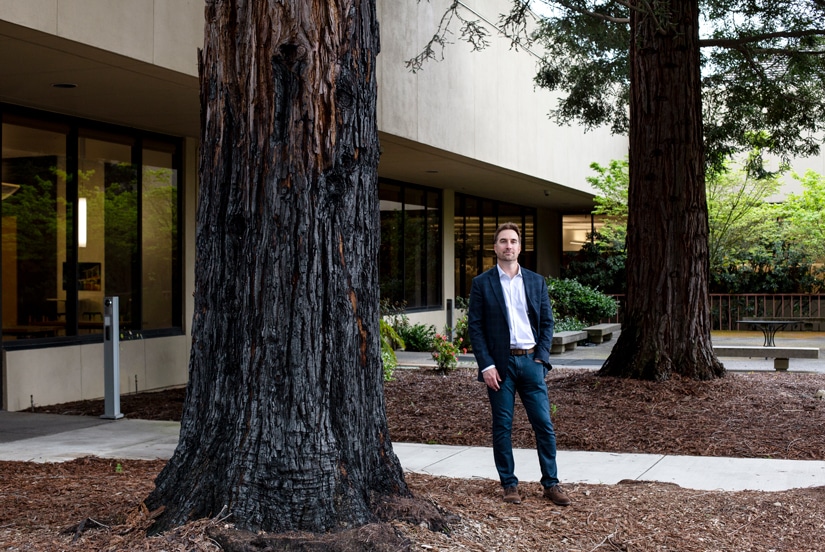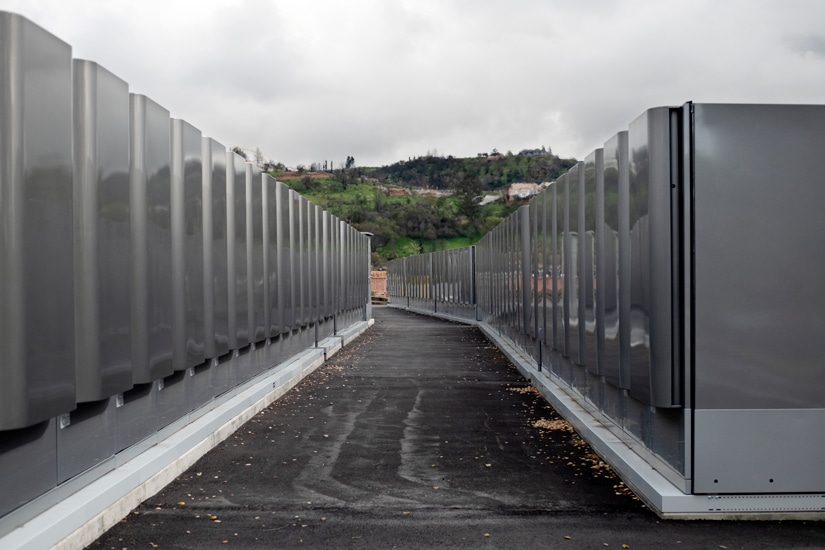|
Getting your Trinity Audio player ready...
|
“I got the phone call that I hoped I’d never get in my job.”
At 2:01 a.m. on October 9, 2017, Mike Viskovich was awakened by a phone call from Keysight Technologies’ Workplace Solutions Senior Director, Alicia Benson. “The call went something like this: ‘There’s a wildfire that’s out of control. It’s headed for our Santa Rosa site. We’re evacuating the entire site now. I’m evacuating my home with my family. I’ll call you when I can,’” the vice president of global sourcing, real estate, and workplace solutions recalls.
Keysight Technologies is an electronic measurement company that was originally part of Hewlett-Packard and Agilent until it eventually emerged as its own separate spinoff about five years ago. Back then, it was already beginning the process of transforming its operating model and work environment. The Tubbs Fire in California would become the catalyst for accelerating the workplace transformation of the world headquarters, which allowed Keysight to emerge as a stronger, more resilient company with a deeper awareness of its own capacity to face down adversity.

This began within the first 38 hours that followed the call Viskovich received. He didn’t sleep, but instead focused his efforts on helping the company rebound from the natural disaster. His first step was to inform his boss, CAO Ingrid Estrada, as well as the CEO Ron Nersesian, of the emergency at hand. Estrada and Nersesian were both in Germany giving a presentation, but luckily, they were readily available to receive the message and took the next available flight out of the country—which left Viskovich as the point man in the meantime. “At that point we had to go straight into crisis management, but it took me a minute to gather my thoughts and realize that this was happening,” Viskovich says. He immediately started phoning his team to get a command center set up near the fire and focus on the number one priority: accounting for all 1,503 of the Santa Rosa site employees.
Nersesian kept close contact with Viskovich via Wi-Fi connectivity on his flight, and emphasized that, as they navigated this crisis together, it was about “people first, people first, people first.”
“In retrospect, that seems like it would be an easy perspective to keep,” Viskovich admits, “but when you’re trying to understand the state of the fire, the buildings that people depend on for their livelihood, and you have a multibillion-dollar company that relies on these buildings to produce products for customers, you obviously feel the pressure to preserve and protect the operation as well.” Still, Viskovich says that sharing in Nersesian’s people-first perspective is what allowed him to maintain focus on where the most care and concern belonged.

The second priority was safety as they assessed the building damage. “Whatever steps we took to get back into our site, we didn’t do them haphazardly or risk anything that would put anyone in harm’s way,” Viskovich says. Keysight’s 195-acre campus ultimately lost two small structures and a K-3 school, including the building out of which Viskovich worked. The four major buildings were left intact, but the wildfire left a mark on every building on-site. There was extensive smoke damage and utilities were lost across the entire campus.
A great many hours, days, and months of cleanup followed—a monumental task for a global company working to maintain consistent business. But Viskovich believes it’s the way that Keysight pulled together during this difficult time that has helped it redefine what it means to be at the company. Displaced families were gifted $1,000, while the 119 employees who lost their entire homes were gifted $10,000 immediately. “We knew that people had insurance, but we also knew it would take some time and there were people who literally had to run out of their houses and didn’t have anything,” Viskovich says. He also notes that the help Keysight received from strategic partners like CBRE made the recovery efforts within facility operation far more manageable.

Keysight set up free crisis counseling, provided gift cards, helped employees find housing, brought in free insurance counselling experts, paid all employees and suppliers while the site was down, and set up an employee relief fund in which fellow Keysight employees across the globe could contribute financially to their impacted colleagues. Even those who couldn’t provide money donated vacation time that Keysight converted to cash for those affected. An employee response center was immediately established which offered everything from food to clothing to batteries for those in need. “Ron, Ingrid, and our executive team were there regularly and I think that went a long way toward letting our people know how we feel about them,” Viskovich says. “I probably gave 100 hugs.”
Keysight utilized the necessary renovation process to evolve the work area. “We bolstered the culture by really tangibly showing people how much we care. Receiving strong sponsorship and oversight from Ron and Ingrid took us even further in the recovery efforts,” Viskovich says. “But from a site footprint perspective, we transformed it into a much more modern and effective work environment, aligned with our company transformation. Keysight has moved from being a hardware-centric products company to a software-centric, solution-focused company, which requires different employee workflows.” More collaboration and integration spaces have been woven into the site footprint, as well as impromptu touch down work spaces and shared labs, and Viskovich said lessons learned from the transformation are being utilized at other Keysight locations.

Viskovich adds that crisis management program improvements were also tested too early for comfort last year at the Calabasas site during the Southern California blaze that made national headlines. A recently installed Bloom Energy 4.3-megawatt fuel cell will help ensure not only a smaller carbon footprint, but that critical operations at the Santa Rosa site will have uninterrupted power, critical when bouncing back from worst-case scenarios.
One of the most amazing aspects of the entire disaster response is that Keysight was not only able to maintain ‘business as usual’ by not canceling even a single order amid the evacuations, but the company’s stock didn’t suffer, either. In fact, it reached an all-time high, which Viskovich feels is a testament to the approach Nersesian and the executive leadership team took during this crisis.

“We kept our focus, our positive outlook, and celebrated any progress we made,” Viskovich says. “During this event, one employee shared the hashtag ‘#KeysightStrong’ in a memo which was embraced by the company and that perfectly describes my sentiment.”


